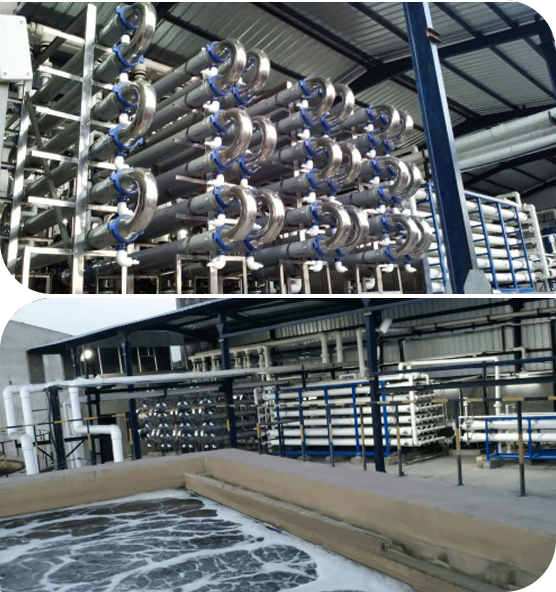
Waterman Engineers Australia is probably the main producers of Zero Liquid Discharge program. A ZLD technique is often a procedure system which is used to eliminate all the liquid squander from a program. The objective of ZLD water procedure is to lower wastewater economically and develop potable drinking water which is suit for regular use. Zero discharge procedure is a sophisticated remedy technique that comprises ultrafiltration, reverse osmosis, evaporation and fractional electro deionization. And we've been a properly-identified provider of ZLD programs.
In many Industries, for instance electricity, oil & gas, chemical compounds, mining and Other individuals, a great deal of wastewater is produced that should be managed. Conventionally, this discharge of wastewater is done by using a plant outfall to some area water overall body like an evaporation pond, or in some cases deep very well injected. These methods bring on numerous environmental problems by the public in many areas of the world, as water is often a scarce resource and its management must be monitored. These fears have resulted inside the establishment of ZLD procedures by lots of industries to lessen their environmental footprint and boost sustainability. And, Waterman Engineers Australia are finest ZLD suppliers you'll find for This technique.
Homes OF ZERO LIQUID DISCHARGE Process
The Attributes of the Zero Liquid Discharge method may vary depending upon the certain design and engineering utilised. On the other hand, some popular Attributes of ZLD units include:
H2o Conservation: Amongst the primary targets of ZLD units should be to preserve drinking water by minimizing the discharge of liquid squander in the setting.
Substantial Water Purity: ZLD systems are meant to develop substantial-good quality water that is no cost from impurities and contaminants, which makes them suitable for use in several industrial processes.
Flexibility: ZLD programs tend to be designed to support a wide choice of input liquid streams, that makes them versatile and suited to use in numerous industries.
Highly developed Wastewater Cure: Zero liquid discharge methods use Highly developed wastewater remedy strategies to get rid of impurities and contaminants from the effluent, making high-good quality h2o.
Waste Reduction: ZLD techniques assistance decrease waste by lessening the volume of liquid waste that needs to be disposed of and by manufacturing a concentrated, strong waste content which might be safely disposed of.
Vitality Effectiveness: ZLD devices can be Vitality-intensive due to superior energy needs of evaporation and also other wastewater cure procedures. Having said that, advances in technologies are producing Zero liquid discharge techniques a lot more Strength-productive and cost-successful.
Waterman Engineers Australia manufactures Zero Liquid Discharge (ZLD) methods made to eliminate all liquid squander, aiming to generate potable drinking water and lessen environmental affect. Their ZLD techniques usually consist of ultrafiltration, reverse osmosis, evaporation, and fractional electro deionization. Key systems employed are Falling Zld System Manufacturer Zero Liquid Discharge System Movie Brine Concentrators, Forced Circulation Crystallizer, and others, which has a two-action technique of pre-focus and evaporation/crystallization to Recuperate and reuse water. These devices are adaptable to distinct industries, emphasizing h2o conservation, substantial water purity, squander reduction, and Power performance. Technological requirements are diverse and customizable, looking at variables like h2o source, move charge, and feed h2o top quality.
The necessity for Zero Liquid Discharge (ZLD) systems arises within the necessity to handle environmental fears connected with h2o scarcity and air pollution. In industries like electrical power, oil & fuel, and mining, vast amounts of wastewater are produced. Customarily, this wastewater is discharged into bodies of water, triggering air pollution and depleting clean up water sources. ZLD programs purpose to minimize these impacts by treating and recycling wastewater inside of the commercial course of action, thus conserving h2o, reducing waste, and marketing sustainability.
When it comes to the complex requirements of the Zero Liquid Discharge (ZLD) process, vital aspects to concentrate on contain the water source it'll deal with, the method's movement price, the quality of feed h2o, the levels of cure included, the recovery price of water, methods for focus disposal, elements of building, working circumstances, and system automation and Command. These components ensure the method's effectiveness, longevity, and effectiveness in treating and recycling industrial wastewater.
Zero Liquid Discharge (ZLD) vegetation supply Advantages such as drinking water conservation, waste reduction, and air pollution prevention, contributing to environmental sustainability. They are applicable in industries like electric power generation, oil and fuel, chemical substances, and mining, where they assist in handling industrial wastewater correctly, minimizing the ecological footprint, and complying with strict environmental restrictions. These methods are important in places struggling with water scarcity and for industries aiming to boost their sustainability and operational efficiency.
FAQs for the Zero Liquid Discharge (ZLD) system typically handle its operational principles, Value-effectiveness, upkeep necessities, environmental impact, applicability across several industries, and regulatory compliance. These questions aid people understand the program's Added benefits, technological demands, and suitability for their particular wastewater management demands.
one. Zero Liquid Discharge (ZLD) is often a wastewater treatment procedure created to remove all liquid squander.
2. The program's parts are motivated by the particular industrial approach, wastewater composition, and regulatory necessities.
three. Effluent treatment method vegetation take away pollutants from textile effluents to avoid environmental contamination.
4. Positive aspects contain water conservation, air pollution reduction, and regulatory compliance.
five. The purpose is to reduce environmental effect by recycling water and reducing squander.
6-9. Effluent procedure crops are phases in wastewater therapy: primary (Actual physical separation), secondary (biological therapy), and tertiary (Sophisticated treatment).
ten. Unit functions incorporate filtration, sedimentation, biological cure, and disinfection.
11. Restricting parameters are variables that have an effect on the treatment's performance, like pH and contaminant concentration.
twelve. Design and style considerations include things like circulation rate, effluent composition, and ideal top quality of treated drinking water.